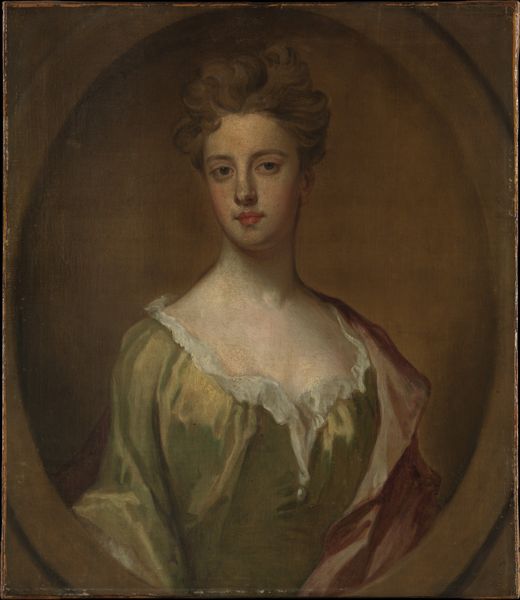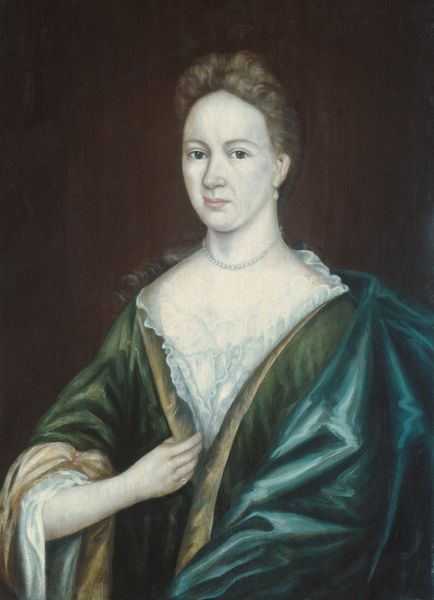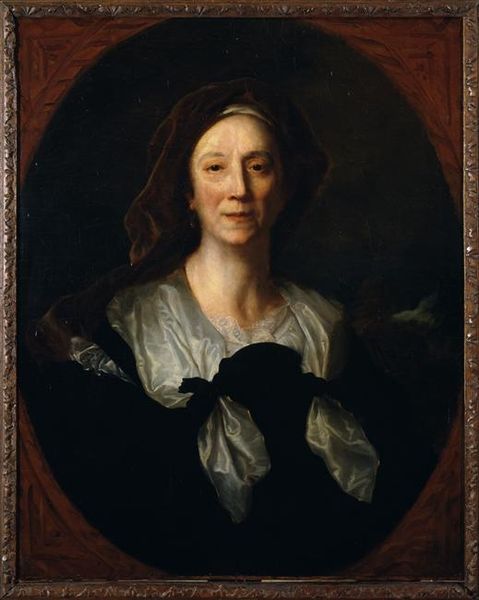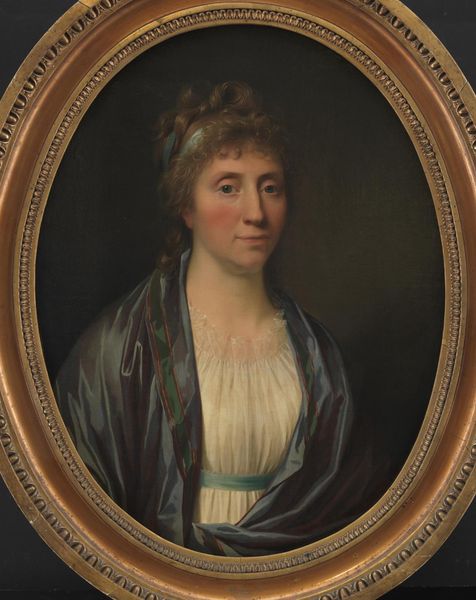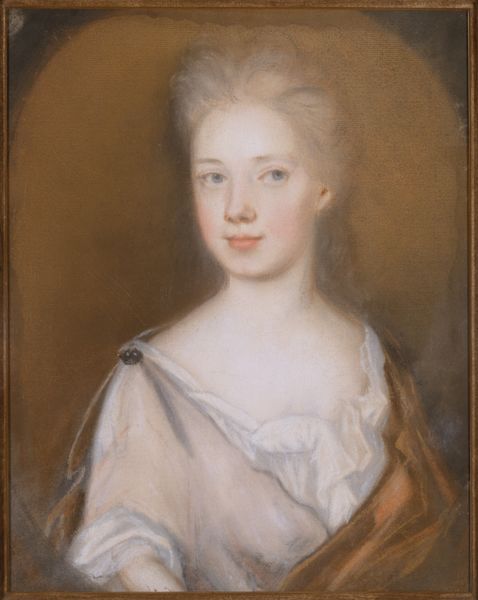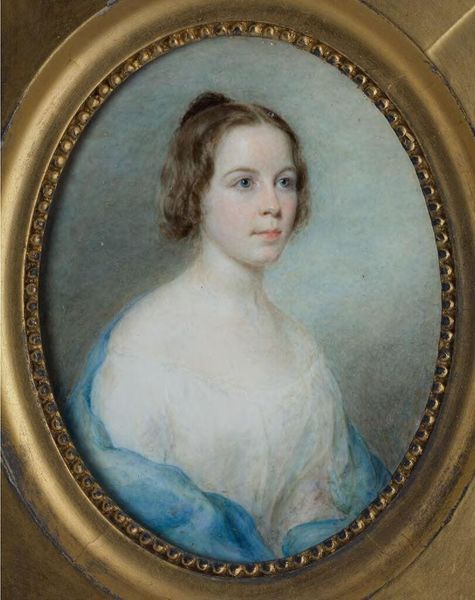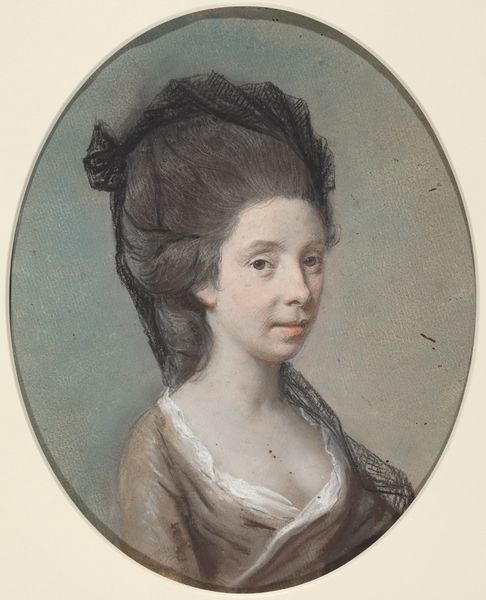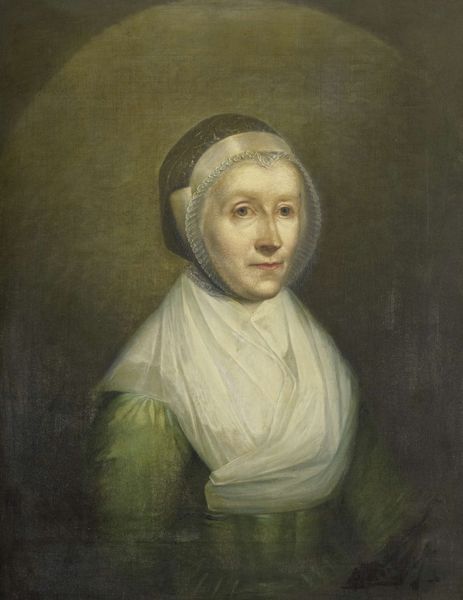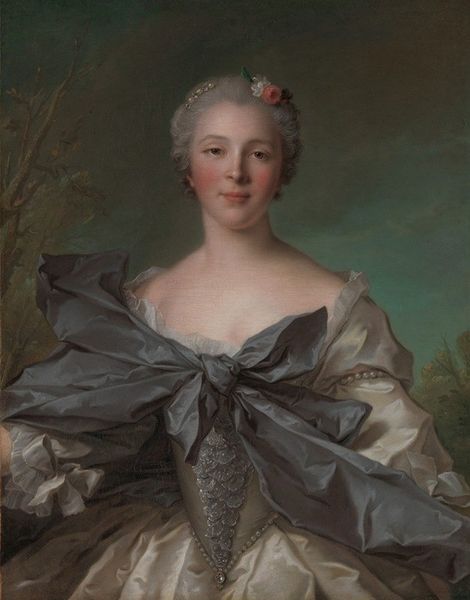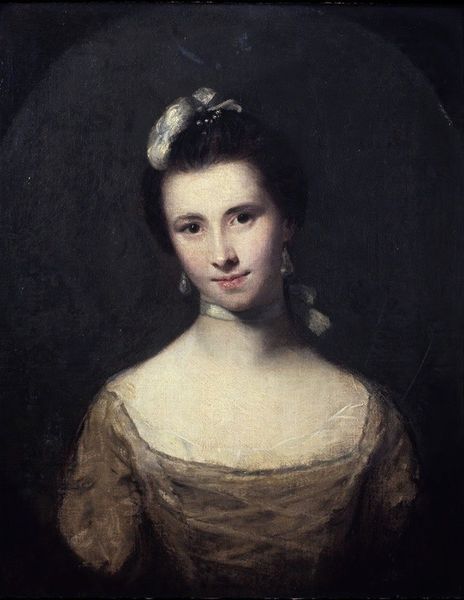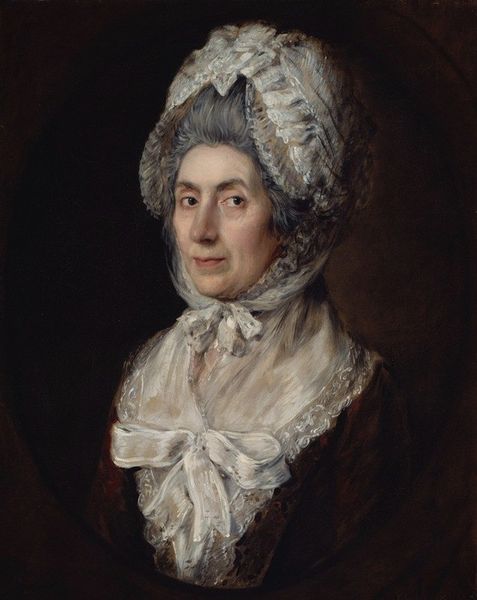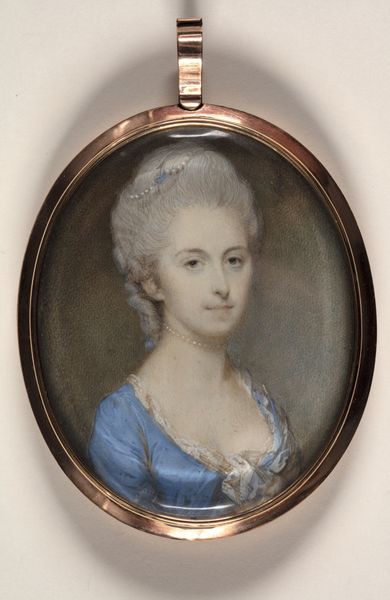
painting, oil-paint
#
portrait
#
baroque
#
painting
#
oil-paint
Dimensions: height 21 cm, width 16.5 cm, depth 5 cm
Copyright: Rijks Museum: Open Domain
Curator: We’re looking at Jan Verkolje’s "Portrait of Margaretha Verkolje, Wife of Reinier Couturier", painted in 1682. It's an oil painting showcasing a woman in an oval frame. Editor: Immediately, I’m struck by its muted tones. There's a certain modesty to the composition; her gaze is direct but not challenging. The overall impression is one of quiet dignity. Curator: Interesting. Consider the technique; the way Verkolje, paints light on her face—almost porcelain-like. Also, it speaks to a very specific kind of material consumption of that period. The cloth drapes so delicately, revealing labor dedicated to capturing its nuances. It invites us to think about the economics of portraiture. Editor: Agreed. The accessories tell their own story as well; those droplet earrings are rather refined. The oval shape, too, seems symbolic, evoking ideas of containment but also of perfection. Does she conform to an ideal, or does the artist perceive her as a self-contained universe? Curator: Well, the materials available to the artist are key. The very facture, the impasto creating texture, shows us Verkolje was less invested in symbolism per se than making use of resources for patrons of the day who desired likeness as material proof of status. Editor: But I wonder what status symbols the earrings carry in the collective memory of the period? Or why Verkolje chose an oval rather than square presentation—psychologically, we feel invited *in* by its enveloping form. Curator: True, but let’s not neglect the practical. The dimensions of the painting and availability of oval canvases likely influenced this choice. These details mattered for both artist and commissioner. Editor: So you suggest her reserved elegance might be tied more to the restraints imposed upon Verkolje’s processes than by artistic license? Curator: In part, yes. Every stroke and flourish represents a deliberate choice impacted by the demands of his trade, the availability of resources, and, most significantly, by whom the portrait served to benefit in the societal register. Editor: Well, exploring both its material origins and psychological depth offers fascinating entry points to appreciating how imagery continues shaping ideas of personal identity across generations. Curator: Indeed. A view to both its making and lasting cultural resonance invites new understandings of value then, and perhaps, even more questions now.
Comments
No comments
Be the first to comment and join the conversation on the ultimate creative platform.
